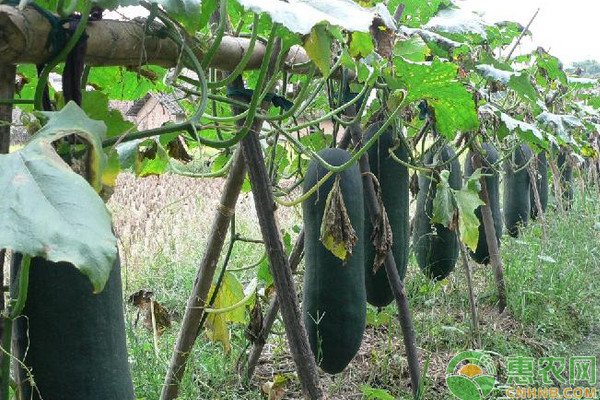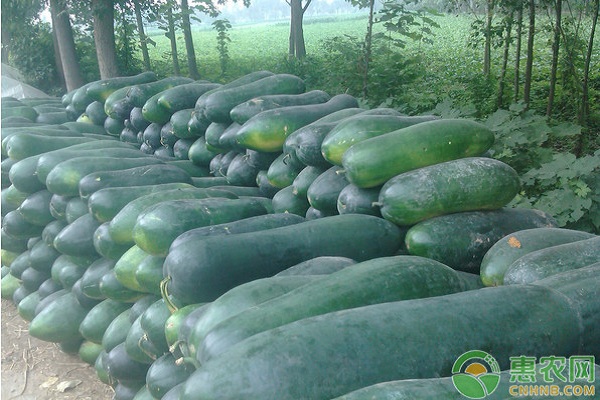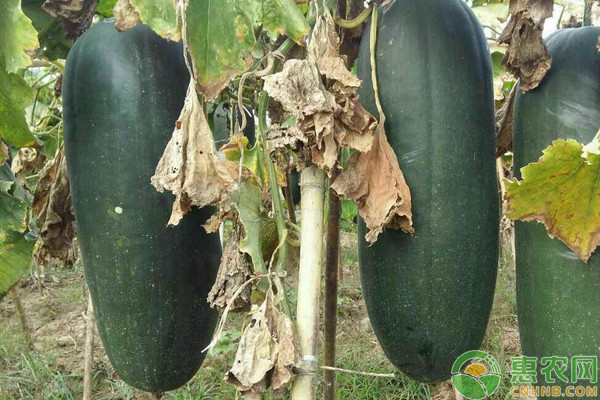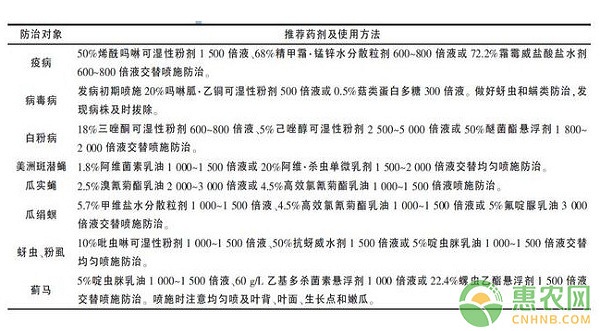Many counties and districts in Guilin have the habit of planting black-skinned melon, and after years of development and research, they have their own set of technical solutions. The following is the implementation of black-skinned melon grafting in Guilin from 2014 to 2017. Cultivation technology research, using the disease resistance of pumpkin rootstock and strong root system to improve the ability of black skin melon to resist soil-borne disease, low temperature resistance and water and fertilizer absorption, the yield increase reached more than 10%, the technology is summarized as follows.

1 Cultivation of grafted seedlings
1.1 rootstock varieties
Choose pumpkin anvil with developed roots, strong growth and strong affinity, such as No. 1 and Strong.
1.2 Scion variety
Choose high-yield and high-quality black-skin melon varieties suitable for cultivation in Guilin City, such as Guiye No. 6, Tiebao, Tiangui 369 and so on.
1.3 seed disinfection and germination
The seeds are turned over for 2~3 hours in advance to increase the germination rate of the seeds. Soak the seeds with warm soup, soak them in warm water at 55 °C 3 times the amount of seeds and stir until cooling. At room temperature, the rootstock seeds were further soaked for 12 h, and the scion seeds were soaked for 8 h. Spike seeds can be immersed in the umbilical mouth to increase the germination rate by a factor of two. Wash the seeds clean, remove the surface water, wrap it in moist gauze, moisten the plastic bag with a slightly open coat, and place it at 28~32 °C for constant germination. The rootstock seed buds are sown about 1 cm long, and the scion seeds are 60% white.
1.4 sowing and post-pod management
1 Seeding of rootstock seeds and management of post-sowing rootstocks in the greenhouse, seeding with a tray substrate. The wet nutrient substrate was filled with a 60-hole plastic tray, and the hole was cut with a 1 cm diameter rounded stick. The seed radicle was placed flat in the hole diagonally along the diagonal direction of the plug, one hole per hole, and the depth was 1 cm. The substrate was covered with a 0.5 cm thick. The greenhouse is covered with plastic film to isolate the soil and the disease is placed. The trays are placed neatly on the film, and the water is sprayed to the wet, covering the plastic film to keep warm. The rootstock of the rootstock was excavated, and the film was removed, and the seedling stage was smashed and blighted with 72.2% of the propofol hydrochloride aqueous solution 800 times. Keep the substrate of the tray moist, remove the cap and seed shell in time, remove the weak seedlings and abnormal seedlings, and fill the missing seedlings. One day before the grafting, the water was immersed once, and 72.2% of the propamocarb hydrochloride saline 800 times solution and 1.8% avermectin emulsifiable oil 3000 times solution were sprayed to prevent the late blight and the spotted fly. Seedlings grow to small 1 leaf 1 heart grafting.

2 Scion seed sowing and post-sowing management Scion seed is spread in the seedling tray with moist sediment, covered with dry river sand 0.5cm thick, sprayed into the basin, the sand is moist but not dripping, use clean film The cover is moisturized and placed in a nursery room at 28~30°C. The humidity before arching is maintained at 95%. After arching the soil, the film is removed in time, and the seedling tray is gently shaken to sink the sand on the top of the seedling. The seedlings (covering the shell) are exposed to the sand surface, and the water spray is moisturized to the seedlings. When the seedling cotyledons slightly crack the opening of the seed shell, the seed shell is peeled off in time, and the water is kept so that the seedling stem does not lose water and bend. After 7~12h of light at 25~30°C, the cotyledon leaves turn green and the seedlings can be grafted immediately.
1.5 Suitable grafting period
The first leaf of the rootstock seedlings is half-opened to flattened, that is, the small one leaf and one heart. The cotyledons of the scion seedlings turn green and the hypocotyls are straightened, which is the most suitable grafting seedling age. In the second half of February, the seeds of pumpkin rootstock and the seeds of the scion were planted at the same time. In mid-March, the seeds of the scion were planted earlier than the seeds of the pumpkin for 3 days, which allowed the seedlings of the rootstock to meet with the seedlings of the scion, which facilitated the rapid healing and survival after grafting. Growing.
1.6 grafting method
Grafted by plugging.
1 Insert the needle to cut the growth point of the rootstock and the true leaf, insert the grafting needle from the base of the mid-vein of the cotyledon along the 30°~45 obliquely into the hypocotyl, and puncture the epidermis 0.5cm below the base of the other cotyledon. .
2 cutting the scion with a two-knife method to remove the black melon seedling top
The end stem segment acts as a grafting scion. The first knife is cut from about 0.5 cm below the base of the back of one cotyledon, and a layer of epidermis is gently cut away from the root; the second knife cuts the hypocotyl perpendicularly on the side of the hypocotyl, and the lengths of the two cutting edges are approximately 1 cm, the cut stem segments are about 1.5 cm long with 2 complete cotyledons and growth points. The two-knife cutting scion is compared with the one-blade cutting, which effectively increases the cortical contact area between the scion and the rootstock, which is beneficial to wound healing.
3 Insert the scion and gently pull out the grafting needle. At the same time, insert the scion into the pinhole quickly, and gently press the scion to make it fit closely with the rootstock. The tip of the incision should be 2mm outside the rootstock.
1.7 Management of plastic greenhouse seedling grafting
Grafting is carried out on sunny days or cloudy days without windy weather. When grafting, the leaves of the rootstock plants are kept dry and anhydrous, and the water content of the tray substrate is 70%. The grafted seedlings are placed neatly on the ground with the film, and the soil is passed through the membrane to isolate the soil. Cover the grafted seedlings directly with a transparent plastic film of 0.01 to 0.02 mm thick and seal the surrounding area to moisturize. 3 days after grafting, the temperature is maintained at 15~25°C, the humidity is above 90%, and the sunshade net covering 90% shading rate on the roof keeps the weak light environment on the sunny day; on the 4th to 6th day, the film is opened and ventilated every morning. 1~2 h, dry the film on the water and then continue to cover, remove the sunshade net in the morning or evening, and cover the sunshade at noon; after 7 days, the picket axis begins to elongate, and the ventilation can be gradually extended. Light time, seedlings without wilting can remove all film and shade nets. After the seedlings survive, the water can be poured once every 10:00 on a sunny day to promote the rapid growth of the seedlings. At the same time, spray 64% of the cream, manganese-zinc wettable powder 600 times solution and 1.8% avermectin EC 2500 times. Control late blight and spotted fly. Timely erasing the lateral buds of the rootstock to ensure the concentrated supply of nutrients, strengthen the seedlings, and cultivate strong seedlings. When the seedling grows to 2 leaves and 1 heart, the field can be planted.
2 High-yield cultivation techniques
2.1 Site preparation of base fertilizer
It is advisable to choose the non-melon crops, the well-drainage, and the organic soil-rich loam field. When the seedlings are planted, the fields will be ploughed and ploughed, and the cultivated organic fertilizers will be uniformly applied to 667~2000kg per 667m2 1 week before planting. The width of the kneading surface is 1.3m, the width of the groove is 0.4m, and the depth of the ditch is 0.3m. In the center of the kneading surface, 50kg of ternary compound fertilizer and 50kg of superphosphate are applied per 667m2, and the soil is covered with a black film for use.

2.2 colonization
In the afternoon on a cloudy or sunny day, choose strong seedlings (2 leaves, 1 heart, cotyledons intact, leaf color green and thick, no pests and diseases, thick stems) planted in a single row on the side of the kneading side (avoiding the central fertilization zone). The plant spacing is 0.7-0.8m, and 667m2 planting is about 550. The planting depth is suitable for the grounding of the grafting interface, and the rooting water is poured after planting.
2.3 Field Management
1 The bracket adopts the "human" shaped dragon skeleton to facilitate ventilation and light transmission. The bamboo sticks with a diameter of 3~5cm and a length of 2.0~2.5m are used for the frame. The heads of the two ends of each row are grouped into one group, and the other two groups are one group. The height is about 1.2m above the ground and intersects into a "human" nail. On the ground, use the crossbar to connect the groups of brackets into one body and fasten them with ropes.
2 When the main vine grows to 12~15 knots and grows about 2m long, the main vines are circled twice in the ring of the plant spacing, and then the vines are placed along the brackets, and the bundles are fixed and fixed. Fix it once every 40~50cm, until the melon grows onto the crossbar, pay attention to the position of the melon melon to be tied on the crossbar, which is convenient to unify the melon on the crossbar. The photosynthetic absorption ability of the leaves at the base of the stem has a great influence on the quality of the fruit. Therefore, it is necessary to pay attention to the protection of the integrity of the leaves at the base of the stem and the wide and thick green, which is reasonable for ventilation and lighting. When the pan vines are concerned, the melons are not in contact with the soil, so as to avoid the adventitious roots of the melon and reduce the ability of the grafted seedlings to resist soil-borne diseases.
3 Plants adjust the black-skinned melon to the main vine fruit, remove all the side branches in time, leave 10~12 leaves to pick the heart after the melon, concentrate the nutrients to supply the main vines and expand the fruit.
4 pollination black skin winter melon pollination is easy to cause deformed melons or melons, especially in the flowering period when encountering bad weather to strengthen artificial assistant pollination, in order to improve the fruit set rate. In general, the female flowers in the 25th to the 32nd section of the main vine have a stable fruit and a large fruit. When the female flower is in full bloom, choose 2~3 female flowers with the shape of the square, the development is full, the flower handle is thick, the ovary is intact, the hair is dense, shiny, and the characteristics of the variety are selected. The open male flowers are removed at around 9:00, and the petals are removed. After aligning with the head of the female flower, do not scratch the hair of the young melon, and each male flower gives 3 female flowers.
5 Leave melon When the quality of the young melon is about 0.5kg, choose the main vine 25~35 knots, the ovary develops fast, the big one, the handle is thick, the correct one is young, and the rest are all removed.
6 When the melon and the sunshade melon grow to 2~4kg, the melon handle is tied to the pole in time. In the summer and autumn when the high temperature and strong light, cover the melon with straw and other sunscreen to protect the melon.
7 Fertilizer management After planting and slowing down the seedlings, apply the seedling fertilizer, and apply 0.5% urea or water-soluble compound fertilizer every 7 to 10 days. After the fruit is stabilized, the melon fertilizer is applied. Every 10 to 15 days, 30 kg of water-soluble compound fertilizer, 10 kg of potassium chloride, 5 kg of chitin and 2 kg of magnesium sulfate are applied per 667 m2. In the middle and late period, the leaf fertilizer was applied, and every 7 days, 10 kg of urea and 10 kg of potassium chloride were applied per 667 m2. Black-skinned winter melon requires a large amount of water, and the water is kept to keep the soil moist. After the vine is put on the shelf, the water is added. After the fruit is expanded, the heavy fertilizer is combined with the heavy water, and the fruit is controlled for 10 days before harvesting. Pay attention to drainage during rain to prevent waterlogging.
3 pest control
The main diseases of grafted black-skinned melon are disease, virus disease and powdery mildew. The main pests are Liriomyza sativae, thrips, aphids, yellow squash, whitefly, melon flies and melons. Pest control is mainly based on prevention, and comprehensive prevention and control measures combining agricultural control, physical control, biological control and chemical control are adopted.
1 Agricultural control measures adopt anti-(resistant) pests and diseases, strictly carry out seed disinfection, carry out rotation, cultivate disease-free and strong seedlings, adopt grafting and seedling cultivation, rational fertilizer management, and clean the countryside.
2 physical control measures installed frequency vibration insecticidal lamp to trap the night moth pests, hanging yellow plate to lure flying locusts, locusts, genus Liriomyza, hummer.
3 Biological control measures use biological source pesticides to control pests and diseases, and use sexual attractants to trap insects such as melon flies.
4 Chemical prevention measures are mainly used for prevention, medications at the beginning of the disease, and alternate use of drugs, in line with the national regulations for safe drug use, the specific control methods refer to Table 1.
4 timely harvest
40 to 50 days after the opening of the female flower, the fruit epidermis can be harvested when it is bright and dark green.
Table 1 Main pests and diseases of black-skinned winter melon grafting cultivation and its control methods

The above is the high-yield cultivation technique of spring black melon grafting in Guilin. If you are interested in black-skin melon planting, then download the Huinong.com app!
Improve Immunity Plant Extract
Improve Immunity Plant Extract,Ginseng Extract,Mulberry Powder,Seabuckthorn Powder
Fufeng Sinuote Biotechnology Co.,Ltd. , https://www.sntextract.com